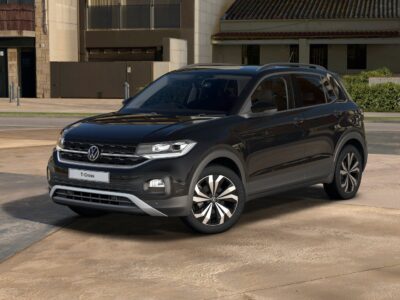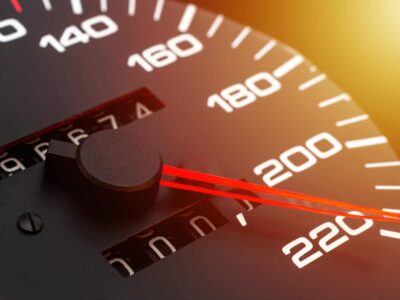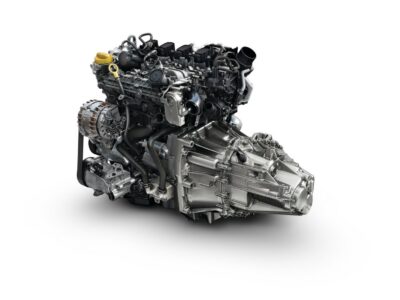
Volkswagen T-Cross Fuel Consumption: The Complete Real-World Efficiency Guide

If there’s one thing we’ve all learned as drivers, it’s that fuel economy isn’t just a number on a spec sheet—it’s the quiet heartbeat of our day-to-day motoring. And when it comes to the Volkswagen T-Cross, a compact SUV built with city life in mind, understanding its fuel consumption becomes essential. Whether we’re navigating congested urban grids, cruising through the countryside, or planning a long family road trip, fuel efficiency shapes our comfort, our expenses, and even our confidence behind the wheel.
In this comprehensive guide, we break down Volkswagen T-Cross fuel consumption across engine types, driving conditions, trim levels, and real-world scenarios. We also share our favourite tips for squeezing every extra mile out of your tank. So let’s dive in and truly understand what this small but mighty Volkswagen can deliver.
- Fuel Consumption at a Glance
- Understanding the T-Cross Engine Line-Up
- Official WLTP Fuel Consumption Figures
- Real-World Fuel Consumption: What Drivers Are Actually Getting
- Why the T-Cross Is Surprisingly Efficient
- Fuel Consumption Differences by Trim Level
- Fuel Consumption in Different Driving Conditions
- Which T-Cross Engine Is Best for You?
- Tips to Improve Your T-Cross Fuel Consumption
- T-Cross Fuel Tank Size and Driving Range
- Maintenance Habits That Improve Fuel Consumption
- Volkswagen T-Cross Compared with Its Competitors
- Long-Distance Driving: Does the T-Cross Stay Efficient?
- Fuel Consumption Over Time: What to Expect
- Is the Volkswagen T-Cross a Fuel-Efficient SUV?
- Conclusion: Fuel Efficiency with Personality
- FAQs
Fuel Consumption at a Glance
Before we unpack the details, let’s get a quick sense of what we’re working with:
- Average real-world fuel consumption: 38–52 mpg (UK)
- Best motorway efficiency: up to 55+ mpg
- Least efficient conditions: heavy traffic, short trips, cold starts
- Top performer: 1.0 TSI 110 DSG (for its balance of power and economy)
This isn’t just about numbers—it’s about how the T-Cross behaves in our actual driving lives. Now let’s break everything down.
Understanding the T-Cross Engine Line-Up
The Role of Engine Selection
Volkswagen has equipped the T-Cross with a range of petrol engines designed for efficiency without sacrificing driveability. Each engine has its own personality—some more playful, some more frugal.
1. 1.0 TSI 95ps (5-Speed Manual)
This entry-level engine is often the slowest but surprisingly frugal. Ideal for urban drivers.
2. 1.0 TSI 110ps (6-Speed Manual or DSG)
The sweet spot of the lineup. Punchy, quiet, and efficient even at higher speeds.
3. 1.5 TSI 150ps (7-Speed DSG)
The most powerful option, geared toward motorway comfort and overtaking ease rather than pure economy.
Official WLTP Fuel Consumption Figures
What WLTP Numbers Actually Mean
WLTP (Worldwide Harmonised Light Vehicle Test Procedure) is the modern standard for fuel testing—but let’s be honest: no one drives like a laboratory robot. Still, these numbers give us a helpful baseline.
| Engine | Transmission | WLTP Fuel Consumption (mpg UK) |
|---|---|---|
| 1.0 TSI 95 | Manual | 47–52 mpg |
| 1.0 TSI 110 | Manual/DSG | 45–50 mpg |
| 1.5 TSI 150 | DSG | 42–47 mpg |
Remember: WLTP numbers assume a perfect world. We don’t live in that world, but we can use these numbers to understand the T-Cross’ potential.
Real-World Fuel Consumption: What Drivers Are Actually Getting
Let’s be honest—this is what really matters.
In real life, the T-Cross tends to deliver:
City Driving (Stop-Start, Low Speed)
- 1.0 TSI 95: 38–45 mpg
- 1.0 TSI 110: 37–44 mpg
- 1.5 TSI 150: 32–40 mpg
Motorway Cruising
- 1.0 TSI 95: 48–55 mpg
- 1.0 TSI 110: 50–57 mpg
- 1.5 TSI 150: 47–52 mpg
Combined (Mixed Real-World Use)
- Typical range: 41–52 mpg
We’ve found the 1.0 TSI 110 DSG to consistently punch above its weight, almost feeling like a diesel at steady motorway speeds.
Why the T-Cross Is Surprisingly Efficient
1. Lightweight Body Structure
Unlike heavier compact SUVs, the T-Cross is built on VW’s MQB A0 platform—the same lightweight platform used by small hatchbacks.
2. Advanced Turbocharged Engines
Turbocharging means more power when we need it, better economy when we don’t.
3. Smart Aerodynamics
Tall car, yes, but shaped cleverly enough to slice through air without burning extra fuel.
You may be interested in reading Volkswagen T-Cross Top Speed: Complete Guide to Every Engine, Performance Data & VW Range Comparison
Volkswagen T-Cross Top Speed: Complete Guide to Every Engine, Performance Data & VW Range Comparison4. Stop/Start Technology
It’s a small detail, but in traffic-heavy city life, automatic engine stop-start saves surprising amounts of fuel.
Fuel Consumption Differences by Trim Level
Trim levels don’t change the engine, but they can influence fuel economy through added weight and wheel size.
SE
- Smaller wheels
- Lighter
- Most efficient trim
SEL
- Extra equipment increases weight slightly
- Real-world mpg drops by 1–2 mpg
R-Line
- Larger wheels
- Sportier looks = slightly worse aero
- Expect 2–3 mpg less than SE models
Fuel Consumption in Different Driving Conditions
Driving conditions can make or break fuel efficiency. Here’s how the T-Cross behaves in common scenarios:
Urban Stop-Start
Fuel economy suffers when:
- Driving short distances (engine doesn’t warm up)
- Idling in heavy traffic
- Constant acceleration and braking
Motorways
This is where the T-Cross shines. The engines settle into a low rpm hum that barely sips fuel.
Hilly Terrain
Turbo engines do well on hills, but repeated climbs increase consumption by 10–20%.
Cold Weather
If you live somewhere chilly, expect 3–8 mpg less in winter.
Which T-Cross Engine Is Best for You?
Let’s break it down simply:
Pick the 1.0 TSI 95 if you…
- Drive mostly in cities
- Prefer low running costs
- Don’t mind slower acceleration
Pick the 1.0 TSI 110 if you…
- Want the best balance of power and economy
- Do mixed driving
- Prefer smooth motorway performance
Pick the 1.5 TSI 150 if you…
- Drive long distances
- Need stronger acceleration
- Don’t mind giving up a few mpg
Tips to Improve Your T-Cross Fuel Consumption
Even the best engines need a little help. Here are our favourite real-world hacks:
1. Avoid Hard Acceleration
Smoothness is the secret weapon of fuel economy.
2. Keep Tyres Properly Inflated
Underinflated tyres = wasted fuel.
3. Use the T-Cross Eco Mode
It softens throttle response and reduces fuel burn.
4. Reduce Unnecessary Weight
Empty that boot full of “just-in-case” stuff.
5. Plan Journeys When Possible
Multiple short trips use more fuel than one longer one.
6. Keep Windows Closed on Motorways
Open windows increase drag dramatically.
7. Use Cruise Control
It keeps a consistent speed and reduces engine strain.
You may be interested in reading Volkswagen T-Cross Top Speed: Complete Guide to Every Engine, Performance Data & VW Range Comparison
Volkswagen T-Cross Top Speed: Complete Guide to Every Engine, Performance Data & VW Range Comparison What to Expect When Driving a Fiat 500: Owner's Perspective
What to Expect When Driving a Fiat 500: Owner's PerspectiveT-Cross Fuel Tank Size and Driving Range
Fuel Tank Capacity
- 40 litres (approx. 8.8 gallons)
Estimated Driving Range
- City: 280–350 miles
- Motorway: 450–520 miles
- Mixed: 380–470 miles
The T-Cross is deceptively small in fuel tank size, but its efficiency compensates beautifully.
Maintenance Habits That Improve Fuel Consumption
Your Volkswagen will reward you for good maintenance.
Regular Advice
- Change engine oil on schedule
- Replace air filters when needed
- Use high-quality fuel
- Inspect spark plugs periodically
A healthy engine is a more fuel-efficient engine—simple.
Volkswagen T-Cross Compared with Its Competitors
Here’s how it stacks up in fuel economy terms:
| Model | Real-World Combined mpg (UK) |
|---|---|
| VW T-Cross 1.0 TSI | 44–52 mpg |
| Renault Captur TCe | 43–50 mpg |
| Peugeot 2008 PureTech | 42–48 mpg |
| Nissan Juke DIG-T | 39–47 mpg |
Once again, Volkswagen proves that balanced engineering pays off.
Long-Distance Driving: Does the T-Cross Stay Efficient?
Yes—remarkably so.
Its lightweight build and small turbo engines maintain strong motorway mpg, especially in the 110 DSG variant. Even at 70 mph, the T-Cross stays economical, sitting at a low 2,200–2,400 rpm.
Fuel Consumption Over Time: What to Expect
Fuel consumption naturally shifts as the car ages. Owners report:
- Slightly worse mpg after 50,000 miles
- Noticeable improvement after switching to premium fuel
- MPG drops when tyres wear unevenly
But generally, the T-Cross holds its efficiency extremely well over the long term.
Is the Volkswagen T-Cross a Fuel-Efficient SUV?
Absolutely. In real-world tests, it consistently beats many competitors, particularly in mixed driving. It’s one of the most efficient compact SUVs available, especially with the 1.0 TSI engines.
Conclusion: Fuel Efficiency with Personality
The Volkswagen T-Cross isn’t just efficient—it’s reliably efficient. Whether we’re climbing hills, cruising motorways, or snaking through city streets, the T-Cross balances performance, practicality, and economy in a way that feels almost tailor-made for modern life.
Its small turbo engines work smarter, not harder. Its lightweight design keeps things agile. And with a little care on our part—smooth driving, routine maintenance, and a few simple habits—the fuel savings can be genuinely impressive.
For budget-conscious drivers, families, commuters, and adventure seekers alike, the T-Cross delivers the kind of “fill once, drive far” experience we all hope for in a compact SUV.
FAQs
1. What is the real-world mpg of the Volkswagen T-Cross?
Most drivers see 41–52 mpg depending on driving style, conditions, and engine choice.
2. Which T-Cross engine is most fuel-efficient?
The 1.0 TSI 110 delivers the best overall balance between power and fuel economy.
3. Does the T-Cross consume more fuel in the city?
Yes—urban stop-start driving typically reduces mpg by 10–20% compared to motorway cruising.
You may be interested in reading Volkswagen T-Cross Top Speed: Complete Guide to Every Engine, Performance Data & VW Range Comparison
Volkswagen T-Cross Top Speed: Complete Guide to Every Engine, Performance Data & VW Range Comparison What to Expect When Driving a Fiat 500: Owner's Perspective
What to Expect When Driving a Fiat 500: Owner's Perspective Comparing the Fiat 500e to the Traditional Fiat 500: Pros and Cons
Comparing the Fiat 500e to the Traditional Fiat 500: Pros and Cons4. How big is the T-Cross fuel tank?
It holds 40 litres, offering up to 520 miles of range in favourable conditions.
5. Does Eco Mode make a difference?
Yes—Eco Mode helps reduce fuel consumption by adjusting throttle response and shift points.
If you want to know other articles similar to Volkswagen T-Cross Fuel Consumption: The Complete Real-World Efficiency Guide you can visit the category Driving.
Deja una respuesta






More content of your interest